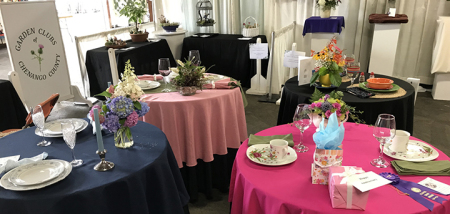From Wearing Earth To Earthen Ware
Published:
August 4th, 2016
By:
Josh Sheldon
“Weak” would be the term that I believe best describes us as a modern people. Our ancestors lived a life the likes of which most wouldn’t put themselves through, and couldn’t, for that matter. We take for granted all the luxury items we surround ourselves with and at times even fail to recognize what those items are.
Of the three basic human needs, food, water and shelter, it wouldn’t take someone stranded long to realize which was the most essential. The problem is that in many cases the resource you need the most can also be the most dangerous for you. In our past, our ancestors used many of the same devices we do; they were simply made of natural materials. In my studies with experimental archaeology, I ran into one of the seemingly easiest projects that actually became the most frustrating, time consuming and elusive. I’m one of those people who, when a project has been started, it’s unbearable to not get it finished. As with most things, patience and perseverance finally paid off and I discovered a few new things along the way that even science wasn’t ready to accept.
In a situation where you have been stranded, you will quickly realize that water is at the top of the list for needs. The problem with this is water can be contaminated by a plethora of nasty parasites and bacterium. Only boiling would insure you it is safe to drink, which would be very difficult without fire and a container of some sort. We are going to make the assumption here that you are able to make fire, which isn’t too hard to do if you know a few tricks. In most cases, you can find garbage these days that can assist you in starting a fire. For this scenario, I will say a broken bottle was found and the bottom was used to start the fire. You now need something to boil water in once you locate a source. This is the point in which you are making a calculated decision as to how long you expect to be stranded. If close to people or roads, you can pretty much expect to get out rather fast, but if you’re lost many miles away from help, you have to think in terms of longevity.
An expedient way to make a vessel is to use coals from the fire to hollow out a semi rotten branch about the size of a coffee can. You burn and scrape the insides and avoid the sidewalls. Eventually you will have a container that you can drop hot rocks into to boil the water. Because they don’t last and can leak, your best bet is to find a clay source to make an earthenware vessel, if you expect to be stuck for a while or it’s starting to look that way. Pottery in this hemisphere is a rather short lived and not expected to have been used much more than a couple thousand years. Before that, they used log vessels which I spoke of and paunch cooking, in which the hot rocks are placed into a hide, and then slung into a container, much like a tarp full of water. The food items or water would be placed in the hide and the water was brought to a boil within less than a minute using the hot rocks. The hides and logs didn’t last long and something better was devised. They began making pots much like we use today out of soft stone, called soapstone. It was so soft that sharpened antlers and rocks were used to scrape away the mass to reveal a container. The problem with that process was accessibility. Soapstone is rare and is only found a few places in the country. The closest to us is many hundreds of miles away in Pennsylvania. For this reason, something more readily accessible was needed and in steps the pottery vessel.
At first, like most things, pottery was pretty plain and rough. Over time, the practice was refined to the point that nearly every pot was decorated in some fashion and was made to high quality standards. The early pots, called “vinette,” had pointed bottoms and were placed directly into the coals which weakened the pot pretty fast. Later, “owasco” pots had flared out rims on them, which I speculate were used to attach cordage to hang above the fire or coals. This would prolong the life of the pot tenfold. I have found several whole native pots and many thousands of pieces over time, which made me want to learn how it was done. When I started looking, I was able to locate little to no information on the topic. Trial and error, here we come.
I started by locating the best clay source possible which actually happened to be located only yards away from a known native village. Thinking I was set, I went home and made some pots. They all blew up in the fire and made me realize something was wrong. At some point, I heard about tempering pottery, which helps fortify its structure and allow gasses to escape rather than explode the pot. I looked closely at the native pottery I had found and identified the stone they were crushing and using as temper. It was a quartzite with a large crystalline matrix that, when exposed to high temperatures, would not react negatively in any way. Of the next batch of pots, only one of the 10 held up. It was at the bottom of the pile and was never exposed to air which set the light bulb off in my head. The next batch also failed which puts me over 200 hours into the project. I then realized that if you cool them too fast, they will crack, which made me assume that if heated too fast the same would happen.
Eureka, hit the nail on the head. My next batch was a total success with only one of the 12 pots having a small hairline crack in it. I now sell many clay items, from pottery to scent diffusing necklaces, and find myself wearing earth a lot these last few years. Besides making a few bucks here and there, in a pinch, knowing how to produce earthenware vessels could save your life.
Good wishes, get out and wear some earth, you may find that you like it.
Author: Josh Sheldon - More From This Author
Comments










